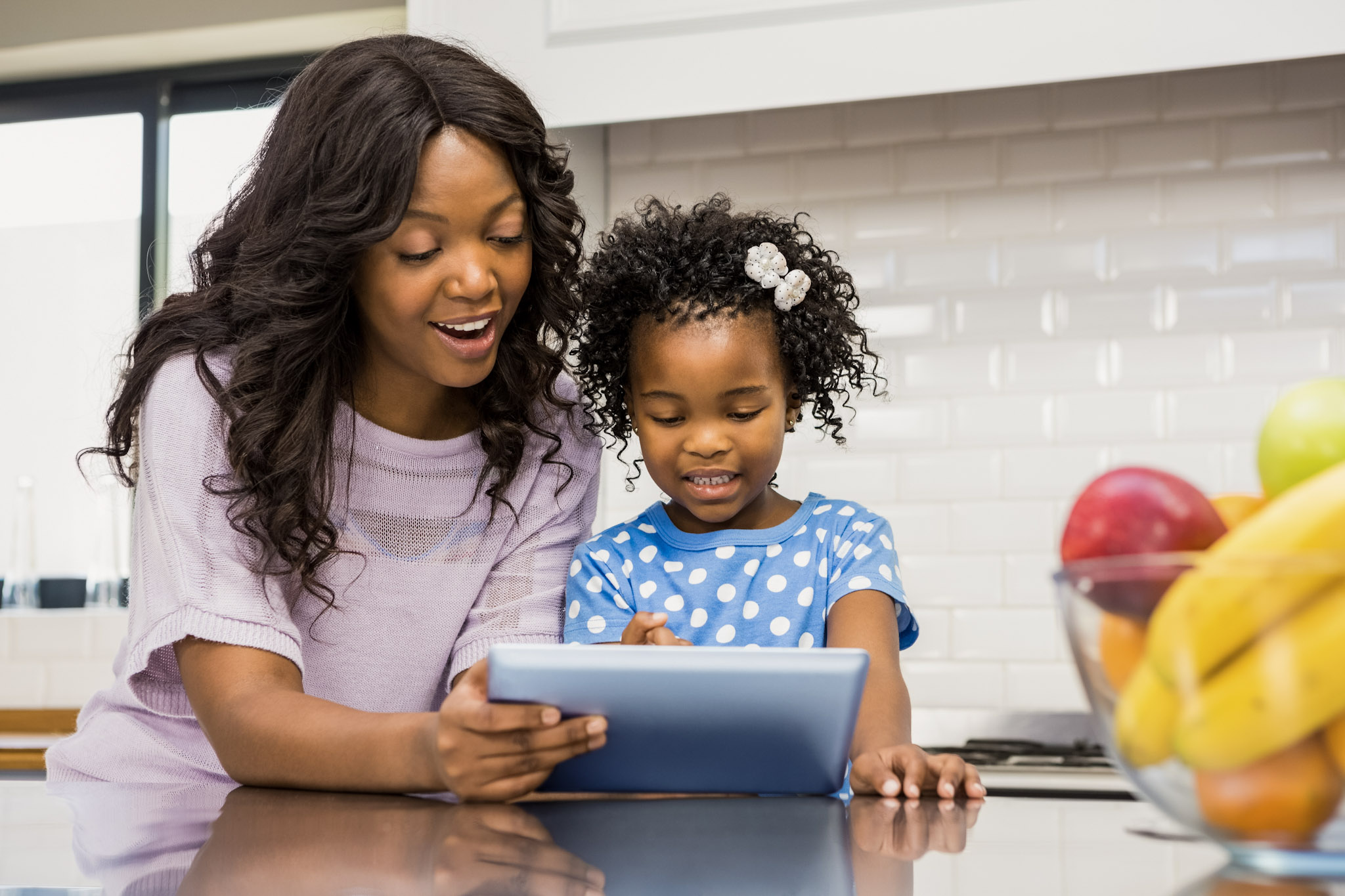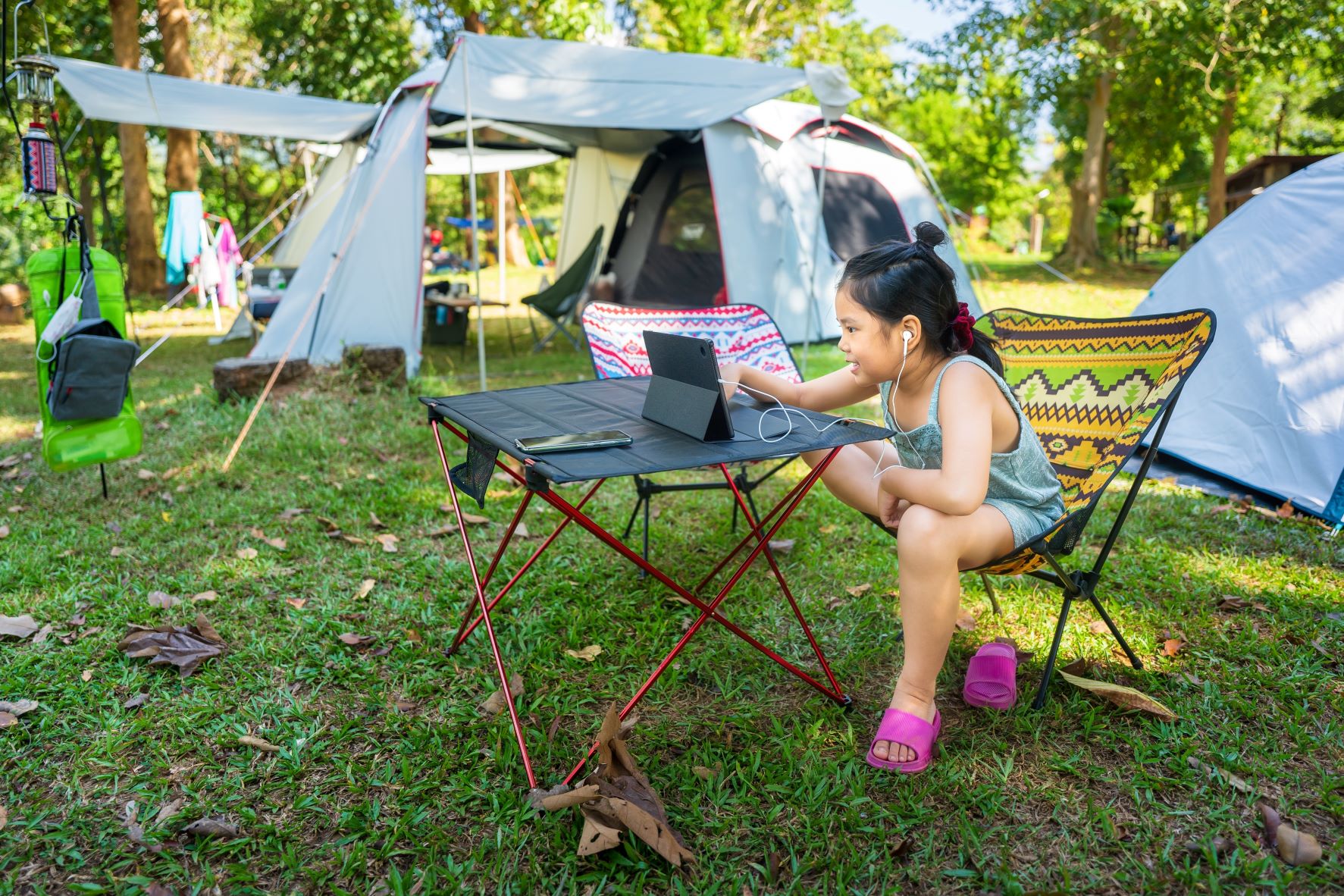From time limits to age-appropriate tech curfews, we look at research and expert advice to help you set the right limits for parents and children alike.
How much time does the average person spend on their phone?
Ofcom data shows that 74% of UK children aged 7-18 have access to a tablet, while 77% have access to a games console. A 2024 Government report found that children aged 5-15 were spending 15 hours a week online in 2018, a jump from an average of nine hours a week back in 2011. It also found that nearly a quarter of young people were using smartphones “in a way that is consistent with a behavioural addiction”.
By comparison, the average adult is online for around six and a half hours a day.
What is screen time? Why does screen time matter?
‘Screen time’, strictly speaking, is the amount of time someone spends using a computing device, such as a smartphone, tablet, laptop, desktop PC or games console. When used about children, the term often also refers to what children are doing online – from what they are looking at, to who they are talking to.
Screen time limits are hotly debated, but two things are clear. Firstly, smartphones, tablets and social media are a big part of modern childhood, up to and including adolescence. Secondly, how much time children should spend engaged in digital activities is a big question for parents: 67% of parents worry about what their child is watching, while 83% believe their child’s screen time needs limits, according to a BBC survey.
Wellbeing and your phone: How to take back control and stop 'doom-scrolling'
A 'digital detox' doesn't have to mean going cold turkey on your smartphone - it can also mean using your devices for more fulfilling and enriching pursuits beyond just constant social media and video streaming.
Alongside their concerns, parents also see great value in their children’s digital lives: according to the same BBC survey, 65% believe their child’s use of ‘screens’ helps foster creativity and communication, and 51% see education as the most important reason their children need to use screens.
What are the possible risks of too much screen time?
While some studies show that children who spend increased time on social media apps, for example, suffer from poorer mental health than their counterparts who do not use these apps, this may be a correlation rather than causation. In other words, while there may be a link, it might not always be as straightforward as one directly causing the other.
Experts and researchers also cite possible links between screen use and the following problems in adults and children:
- Sleep disruption
- Eye strain
- Obesity
- Opportunity cost (in other words, what is your child potentially missing out on while they’re using a device?)
What are the ideal or recommended screen time limits?
What, exactly, screen limits should be, however, is not so clear. Just as ‘five a day’ is an overly simplified way of looking at a child’s need to eat fruits and vegetables in a balanced diet – five helpings of mangoes is not the nutritional equivalent of, say, five individual portions of peas, broccoli, spinach, carrots, and apples – so, too, does screen time vary in value.
Neither the NHS as a whole nor the National Institute for Health and Care Excellence (NICE) have detailed guidelines about screen time. Some NHS trusts advise against any screen time for children younger than 18-24 months, with a screen time limit of around two hours a day for older children. ChildNet notes that there isn’t a ‘perfect amount of time to spend online’, instead emphasising that online time should be spent well.
How to talk to your teenage sons about online toxicity
If you’re a parent struggling to talk to your adolescent or preteen about the worrying internet content they’re consuming, these tips from a clinical psychologist could help.
Is your child’s screen time well spent? Time may not be the issue
Increasingly, experts are changing the conversation from time limits to type limits. Common Sense Media’s research identifies four very different types of screen time which have, it says, different impacts on developing minds, and should be allocated differently. In order from least to most beneficial, passive screen time includes the mindless watching of videos or scrolling, while interactive screen time includes playing games and problem-solving.
Next in their hierarchy is screen time for communication, ie video chatting, or using social media, followed by content creation screen time, in which the device is a tool used to make, for example, art, music, writing or programming code.
How to do screen time for your family
As it’s likely each family will need to take their own bespoke approach to screen time, here are some issues to consider as you set your own screen time rules and guidelines with your children.
- Manage expectations. Agree to daily maximum screen time for children – and adults, too, so they can act as role models. Be realistic about academic and professional screen time and factor that into your goals. Some families find success with setting certain tech periods rather than specific tech times – late afternoon, for example – so teens and parents are clear on when they can expect to speak to their friends.
- Set screen breaks. Developed in the 1980s, the Pomodoro time management method uses a timer (handily, there’s one on your phone) to set focus intervals, often in 25-minute chunks. When the timer buzzes, step away from your screen for a break.
- Keep yourself honest with screen time tracking services and apps. Almost all modern smartphones, tablets and computers have settings that track screen time and activity (parents may want to check these, too!). Apple Screen Time allows parents in iOS households to manage iPhones and iPads remotely, restricting access at certain times and setting limits on specific apps. Android households can use Google Family Link to remotely set time limits, device curfews, and to approve or block any specific apps that a child wishes to download. Third-party alternatives such as Qustodio could be useful for households where individuals’ online time may span different devices with different operating systems – from an Android phone to an iPad to a Windows PC, for example.These tools can inform your approach, as well as enforce it. With the data they provide, you may find that you need to adjust screen time limits on certain days, for example, or to accommodate certain activities or times of year, such as exam season or Christmas.
- Consider the type of screen time. Talk to your family about balancing passive time with creative initiatives. The online safety experts Digital Awareness UK worked with Vodafone to create Digital Parenting Pro and this introduction to parental controls and safety settings to help monitor the type of online activities children engage with. The charity Place2Be has useful guidelines for talking to children about gaming and other digital activities.
- Set offline activity goals. Factor in family time that doesn’t include gaming or watching a film. Keep an aspirational list in your kitchen, so whenever you hear ‘I’m bored’, you have an easy backup plan. Make sure, as the NSPCC advises, that parents set a good example for kids by also limiting their screen time.
- Designate phone-free times and zones. Establish a few parts of your home, and activities, where screens are not permitted, for example the dining table or bedtime. Most experts agree that being able to have a bedtime routine that is screen-free helps everyone get better-quality rest.
Stay up to date with the latest news from Vodafone by following us on LinkedIn and Twitter/X, as well as signing up for News Centre website notifications.

![Small girl with dad using tablet[Aobe Stock] Small girl with dad using tablet.](https://www.vodafone.co.uk/newscentre/wp-content/uploads/2025/11/Small-girl-with-dad-using-tabletAobe-Stock.jpeg)







![worried mother hugging upset teenage daughter [Adobe Stock] A stock image of a worried mother hugging her upset teenage daughter.](https://www.vodafone.co.uk/newscentre/wp-content/uploads/2025/02/worried-mother-hugging-upset-teenage-daughterAdobe-Stock-Optimised.jpg)
